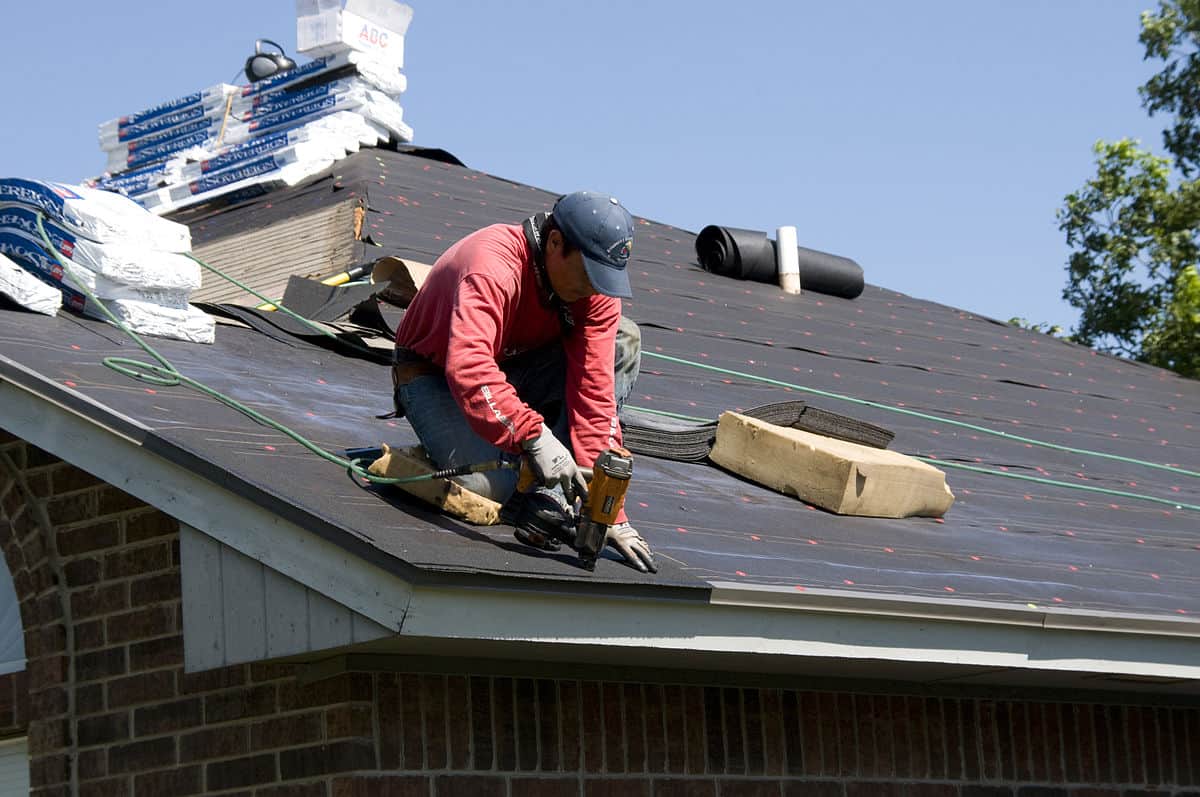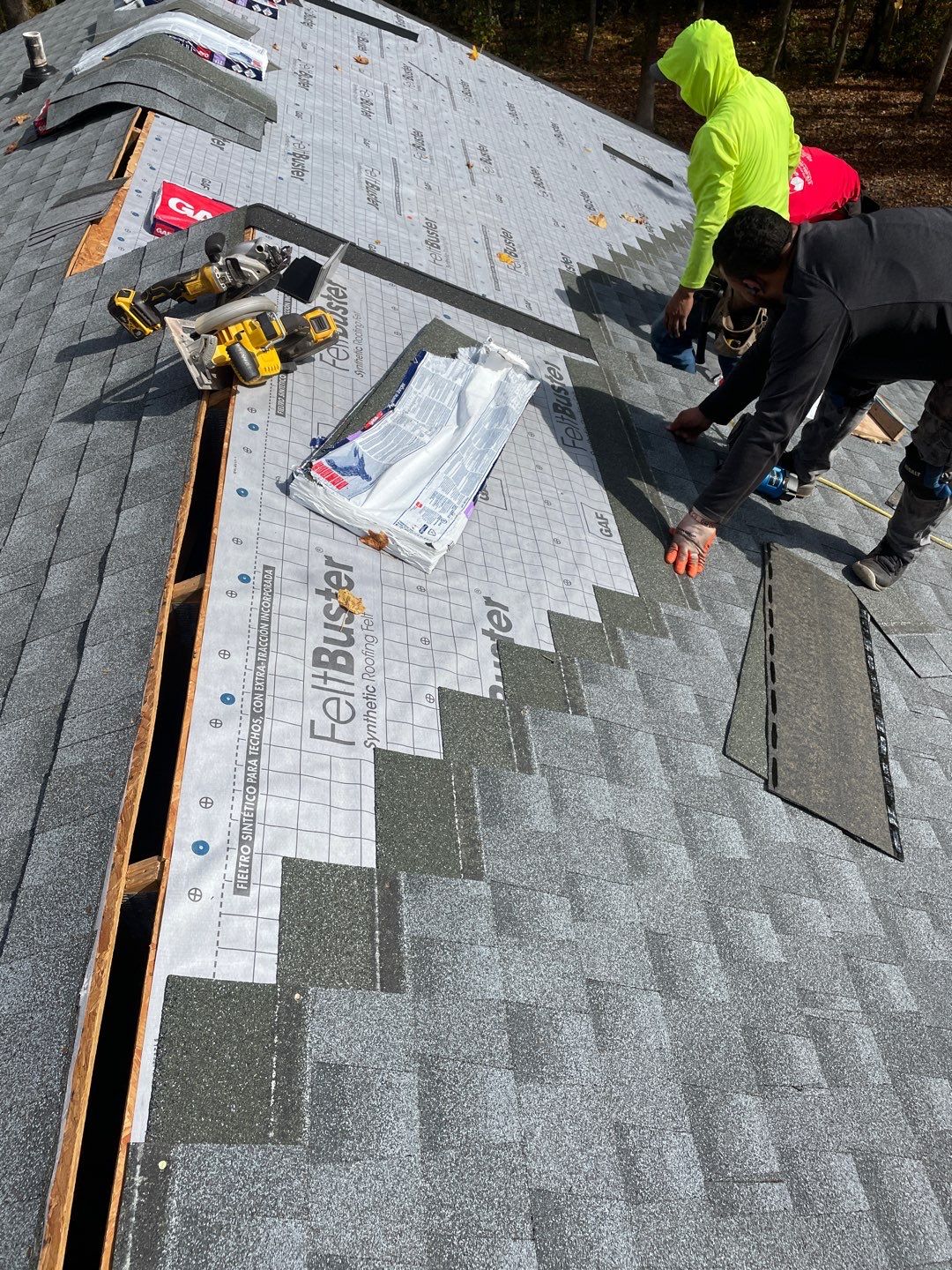Finest Practices for Ensuring Proper Roof Air Flow
Ensuring proper roof covering ventilation is essential for the durability and efficiency of a roof. A well balanced consumption and exhaust air vent proportion, commonly 1:300, plays an essential duty, with consumption vents preferably positioned at the lower side of the roofing system for awesome air access and exhaust vents at the height for cozy air leave. Normal inspections to identify clogs and preserve clear air movement are paramount. Maintaining insulation away from vents is critical to prevent air flow constraint. Understanding these fundamental components establishes the phase for more comprehensive insights into installment and upkeep techniques that can dramatically improve your roof covering system's performance.
Understand Air Flow Fundamentals
Appropriately comprehending ventilation basics is essential for ensuring the longevity and efficiency of roof systems. Reliable ventilation mitigates wetness accumulation and temperature level extremes in the attic, both of which can cause considerable structural damages gradually. A well-ventilated roofing assists in preventing common concerns such as mold development, wood rot, and ice dams, which can compromise the stability of the roofing materials and the underlying structures.
The primary goal of ventilation is to help with the motion of air, enabling a constant exchange in between the outside and indoor environments. This balance is attained via a combination of consumption and exhaust vents that work together to maintain optimal air movement. Intake vents, commonly located along the soffits or eaves, enable fresh air to go into the attic room room, while exhaust vents, typically located at or near the roof ridge, make it possible for hot, moist air to run away.
Trick elements affecting the efficiency of roofing system air flow include correct placement, ample sizing, and making certain that both consumption and exhaust vents are unblocked. Normal assessment and maintenance are important to determine prospective clogs, damages, or inadequacies in the ventilation system, consequently guarding the roofing's performance and toughness.
Sorts Of Roofing Vents
Roof vents play a crucial duty in preserving efficient attic air flow and, by expansion, the overall health and wellness of the roof. Numerous kinds of roofing vents are available, each with special advantages customized to certain roof requirements. Ridge vents, for instance, are set up along the roof's peak, enabling cozy, damp air to leave from the attic room. They offer continuous air flow and blend effortlessly with the roofline, making them both reliable and visually pleasing.

Soffit vents are mounted under the eaves and work in tandem with roof covering vents to ensure a balanced consumption and exhaust system. By permitting cooler air to get in from below, soffit vents help with the expulsion of warm air via top vents. Gable vents, located on the outside wall surfaces of the attic room, offer one more effective solution, especially in homes with gable roofs.
Examine Your Current Air Flow

Next, consider the age and problem of your roof materials and ventilation parts. Older systems may not follow existing building ordinance or might have deteriorated in time, reducing their effectiveness. Conduct an extensive exam to identify any type of indicators of damage, such as rust, damage, or voids that can endanger the system's efficiency.
Furthermore, gauge the attic temperature level and humidity levels. Heats and humidity can show poor ventilation - gainesville fl roofing companies. Make use of a hygrometer and thermostat to acquire exact readings, contrasting them with outdoor conditions. Consistent discrepancies suggest potential problems that need dealing with.
Setup Best Practices
Efficient installment of roof covering air flow systems is paramount for guaranteeing optimal performance and longevity. Correct setup starts with recognizing the specific ventilation needs of the building and the roofing it covers. This entails determining the proper proportion of consumption to tire vents, typically adhering to the 1:300 guideline, which stipulates one square foot of air flow for every single 300 square feet of attic room flooring area.

Intake vents need to be mounted at the roofing system's reduced side, frequently in the soffits, to enable awesome air to go into. Exhaust vents, on the various other hand, need to be installed near or at the roofing's height to assist in the leave of cozy, damp air.
Seal all air vent links diligently to avoid air leaks and potential water seepage. Use high-grade products and adhere to maker standards to ensure sturdiness and efficiency. Furthermore, integrating ridge vents with baffles can considerably improve airflow performance by preventing wind-driven rain and snow from going into the attic room.
Ultimately, accurate setup of roofing ventilation systems mitigates possible problems such as mold growth, ice dams, and architectural damage, guaranteeing the roofing system's stability and the structure's overall health and wellness.
Normal Upkeep Tips
Consistency in maintenance practices is essential to ensuring the long-term efficiency of roofing air flow systems. Routine evaluations are important, preferably executed biannually-- in the springtime and autumn. During these inspections, guarantee that vents are without debris, nests, and various other blockages that might hinder airflow. Look for any indicators of wetness accumulation or mold go to these guys and mildew, as these can indicate inappropriate ventilation or leaks (gainesville fl roofing companies).
Use a soft brush or a vacuum to remove dirt and debris from intake and exhaust vents. Be mindful not to damage the air vent screens or louvers throughout the procedure.
Proper insulation is similarly vital. Guarantee that attic insulation does not block the vents, as this can severely restrict air flow. Reposition or change it to keep an effective obstacle. if any type of insulation has actually changed or settled.
Last but not least, replace any type of harmed or missing out on parts without delay. Broken vents, broken roof shingles, or tatty blinking can all add to poor ventilation and should be dealt with immediately. Routine maintenance ensures that the roofing ventilation system works ideally, consequently expanding the life expectancy of the roof covering itself.
Conclusion
Making certain appropriate roofing air flow is extremely important for keeping the efficiency and sturdiness of a roofing system. Adherence to the 1:300 consumption and exhaust vent proportion, combined with the calculated placement of vents, is crucial. Normal biannual inspections, particles cleaning, and making sure insulation does not obstruct airflow are essential methods. Carrying out these best techniques will cultivate a well-ventilated roof, consequently reducing prospective problems related to moisture build-up and excessive warmth, inevitably extending the roof's life-span.
A balanced consumption and exhaust air vent ratio, typically 1:300, plays a crucial duty, with intake vents preferably positioned at the lower side of the roof for great air entry and exhaust vents at the peak for warm air leave. Intake vents, normally situated along the eaves or soffits, permit fresh gainesville fl roofing companies air to website link enter the attic area, while exhaust vents, usually positioned at or near the roofing ridge, allow hot, damp air to get away.
Soffit vents are mounted under the eaves and job in tandem with roofing system vents to make sure a well balanced intake and exhaust system. By allowing cooler air to enter from below, soffit vents promote the expulsion of hot air through upper vents. Adherence to the 1:300 consumption and exhaust vent ratio, coupled with the tactical placement of vents, is important.